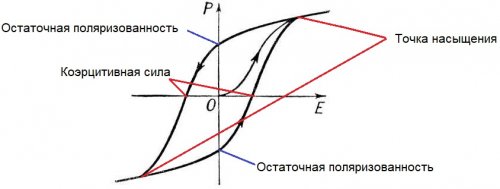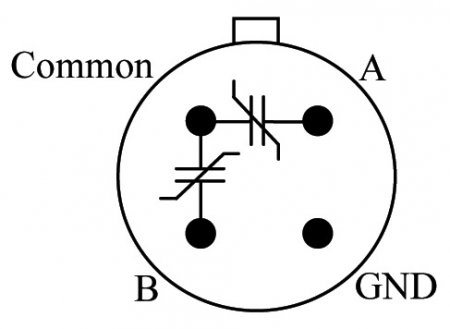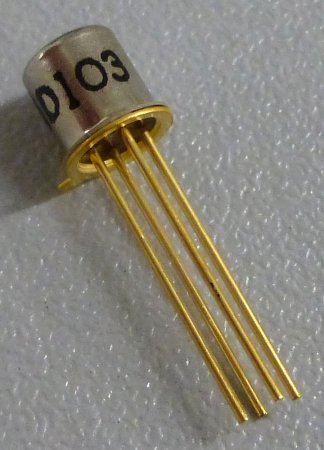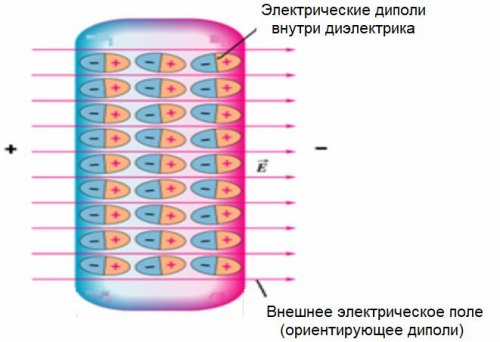Dielectrics with special properties — ferroelectrics and electrics
Dielectrics in the usual sense of the word are substances that acquire an electric moment under the action of an external electrostatic field. Among dielectrics, however, there are those that exhibit completely unusual properties. These dielectrics with special properties include ferroelectrics and dielectrics. These will be discussed further.
Ferroelectrics
Spontaneous or spontaneous polarization of matter was first discovered in 1920 in Rochelle salt crystals and later in other crystals. However, in honor of Rochelle salt, the first open dielectric exhibiting this property, the entire group of such substances began to be called ferroelectrics or ferroelectrics. In 1930-1934, a detailed study of the spontaneous polarization of dielectrics was conducted at the Leningrad Physics Department under the leadership of Igor Vasilievich Kurchatov.
It turned out that all ferroelectrics initially demonstrate a pronounced anisotropy of ferroelectric properties, and polarization can be observed along only one of the crystal axes.Isotropic dielectrics have the same polarization for all their molecules, while for anisotropic substances, the polarization vectors are different in different directions. Currently, hundreds of ferroelectrics have been discovered.
Ferroelectrics are distinguished by the following special properties. Their dielectric constant e in a certain temperature range is in the range of 1000 to 10000 and changes depending on the strength of the applied electrostatic field and also changes non-linearly. This is a manifestation of the so-called Dielectric hysteresis, you can even plot the polarization curve of a ferroelectric—a hysteresis curve.
The hysteresis curve of a ferroelectric is similar to a hysteresis loop for a ferromagnet in a magnetic field. There is a saturation point here, but you can also see that even in the absence of an external electric field, when it is equal to zero, some residual polarization is observed in the crystal to eliminate which an oppositely directed coercive force would have to be applied to the sample.
Ferroelectrics are also characterized by an intrinsic Curie point, that is, the temperature at which the ferroelectric begins to lose its residual polarization as a second-order phase transition occurs. For Rochelle salt, the Curie point temperature is in the range of +18 to +24ºC.
The reason for the presence of ferroelectric properties in a dielectric is spontaneous polarization resulting from the strong interaction between the particles of the substance. The substance strives for a minimum of potential energy, while due to the presence of so-called structural defects, the crystal is anyway divided into regions.
As a result, when there is no external electric field, the total electric momentum of the crystal is zero, and when an external electric field is applied, these regions tend to orient themselves along it. Ferroelectrics are used in radio engineering devices such as variconds — capacitors with variable capacitance.
Electrets
Dielectrics are called dielectrics that can maintain a polarized state for a long time even after the external electrostatic field that caused the polarization is turned off. Initially, dielectric molecules have constant dipole moments.
But if such a dielectric is melted and then a strong permanent electrostatic field is applied while it melts, a significant fraction of the molecules of the molten substance will be oriented according to the applied field. Now the molten substance must be cooled until it solidifies completely, but the electrostatic field is allowed to act until the substance hardens. When the molten substance has cooled completely, the field can be turned off.
The rotation of the molecules in the substance solidified after this procedure will be difficult, which means that the molecules will retain their orientation. This is how electricians are made, capable of maintaining a polarized state from a few days to many years. For the first time electret (thermoelectret) was made in a similar way from carnauba wax and rosin by the Japanese physicist Yoguchi, this happened in 1922.
Residual polarization of the dielectric can be obtained by orienting quasi-dipoles in crystals by migrating charged particles to the electrodes or, for example, by injecting charged particles from electrodes or from interelectrode gaps into the dielectric during polarization. Charge carriers can be introduced into the sample artificially, for example by electron beam irradiation. Over time, the degree of polarization of the electret decreases due to relaxation processes and the movement of charge carriers under the influence of the internal electric field of the electret.
In principle, any dielectric can be converted to an electret state. The most stable electrets are obtained from resins and waxes, from polymers and inorganic dielectrics with a polycrystalline or monocrystalline structure, from glasses, sieves, etc.
To make a dielectric a stable electret, it must be heated to the melting point in a strong electrostatic field and then cooled without turning off the field (such electrets are called thermoelectrets).
You can illuminate the sample in a strong electric field, thus producing photoelectrics. Or irradiate with radioactive effects — radioelectrics. Just put it in a very strong electrostatic field — you get an electrolectret. Or in a magnetic field — a magnetoelectret. The solidification of an organic solution in an electric field is cryoelectret.
Methanol electrets are obtained by mechanical deformation of the polymer. Through friction - triboelectrics. Corona electrets are in the field of action of the corona discharge. A stable surface charge achieved on the electret is of the order of 0.00000001 C/cm2.
Electrets of various origins are used as sources of constant electrostatic field in vibration sensors, microphones, signal generators, electrometers, voltmeters, etc. They perfectly serve as sensitive elements in dosimeters, memory devices. As focusing devices in gas filters, barometers and hygrometers. In particular, photoelectrets are used in electrophotography.




